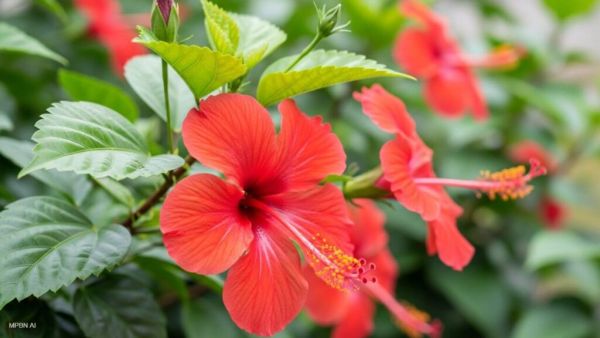
If you also go to your garden every morning and look at the hibiscus plant and think that it is such a big plant, why are flowers not coming? So you are not alone. Many people face this problem. Hibiscus plant is as beautiful as it looks, it is equally sensitive. Its beauty flourishes only when it gets proper care, not too much sunlight, not too much water, and right amount of fertilizer.
But if these small things are not paid attention to, then the plant is limited to just leaves and refuses to give flowers. So let us know the 5 major reasons for the hibiscus plant not blooming and their solutions, which will help your plant bloom again.
1. Lack of sunlight
Hibiscus is a plant that loves sunlight. If your plant is not getting 4 to 6 hours of direct sunlight every day, it is almost impossible for it to flower. When the plant is kept in shade or indoor area, it produces only green leaves and not flowers. Keep the plant in a place where it gets light morning and moderate afternoon sunlight. During extreme heat, keep the plant under the cover of a shade net or a light curtain. If the plant is indoor, take it outside in sunlight 3 times a week. In winter, it is necessary to keep hibiscus in sunlight for at least 5 hours a day, only then the flowers bloom.
2. Wrong amount of water
Hibiscus plant likes moisture in water, but not waterlogging. If the soil is too dry, the plant stops making flowers. At the same time, if excess water is given, the roots start rotting and the plant becomes weak and stops giving flowers. Water lightly every day in summer, but keep in mind that the soil should be moist, not wet. Water every 2–3 days in winter. Make sure to make drainage holes in the soil so that excess water can drain out. Water only if the upper surface of the soil has dried.
3. Imbalance of fertilizer
Many people think that adding more fertilizer will result in more flowers in the plant, but it is not so. Fertilizer with high nitrogen content only increases leaves in the plant, not flowers. The plant needs phosphorus (P) and potassium (K) for flowers. Give cowdung manure or vermicompost twice a month. For flowers, you can make a light solution of bone meal or DAP and MOP mixture. Always water after applying fertilizer. Giving neem cake or banana peel powder once every month gives energy to the plant to flourish.
4. Wrong soil or old soil
If your plant has been in the same pot for many years and you have never changed the soil, then this is also a big reason for non-flowering. Old soil loses nutrients and hardens, blocking oxygen to the roots. Every 6–8 months, remove soil from the sides of the plant and add new, nutritious soil. Mix 40% garden soil, 30% cow dung manure, 20% sand and 10% coco peat in the soil. Keep in mind that the soil should be loose and with drainage so that water does not stagnate. Repotting the plant every year in spring increases the chances of flowering manifold.
5. Insects and Fungi
It is common for white insects, aphids or ants to appear on the leaves of the hibiscus plant. These insects damage the new buds of the plant, due to which the flowers do not bloom. Spray neem oil once a week (5ml neem oil and 1 liter water). If there are more insects then use organic insecticides like neem cake. Clean the leaves regularly to prevent fungus from growing. The medicine is more effective if sprayed early in the morning.
Tips to fill hibiscus plant with flowers
- Prune the plant regularly during the flowering season from March to October.
- Cut out old dry branches to allow room for new buds to form.
- During the rainy season, keep the plant in a place where water does not accumulate.
- Hibiscus can sometimes be washed with lukewarm water, this prevents fungus from growing.




